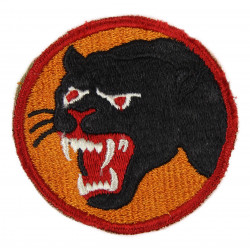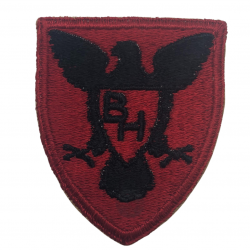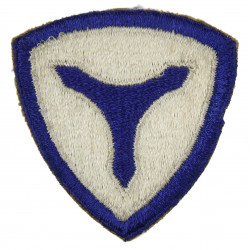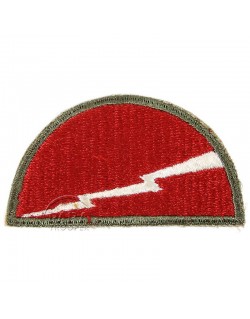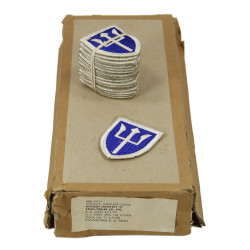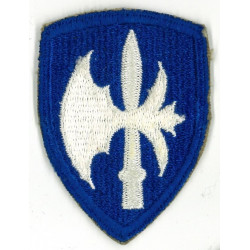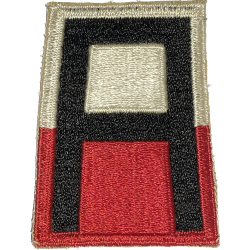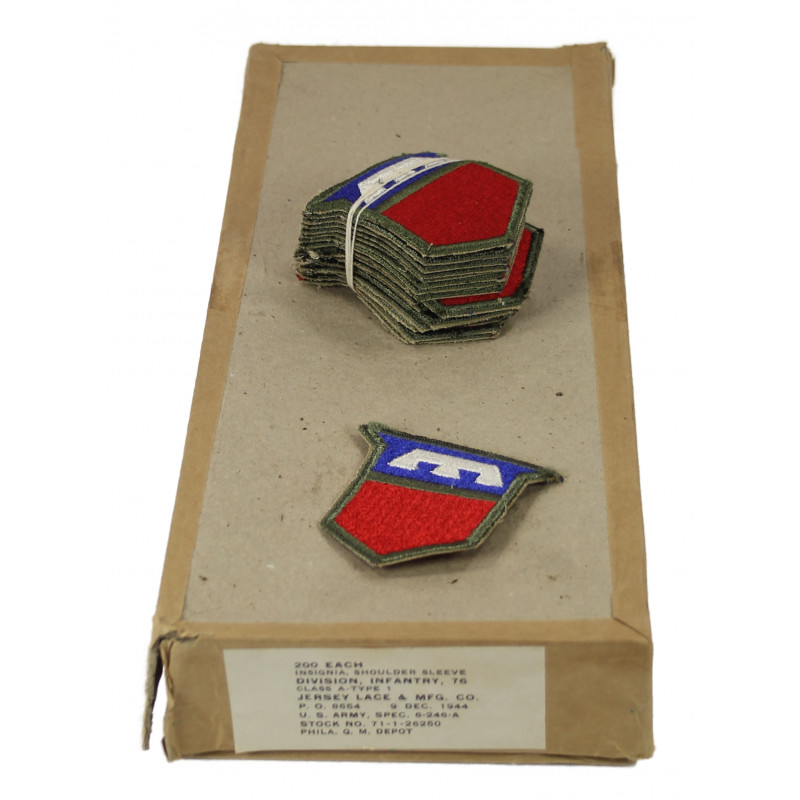





Patch, 76th Infantry Division, 1944
Genuine WWII US shoulder sleeve insignia of the 76th Infantry Division, 'Onaway Division', found in its original packaging dated December 9, 1944.
The 76th Infantry Division arrived in England, 20 December 1944, where it received additional training. It landed at Le Havre, France, 12 January 1945, and proceeded to the Limesy concentration area. The Division moved to Beine east of Reims and then to Champlon, Belgium, 23 January, to prepare for combat. Relieving the 87th Division in defensive positions along the Sauer and Moselle Rivers in the vicinity of Echternach, Luxembourg, 25 January, the 76th sent out patrols and crossed the Sauer, 7 February, and breached the Siegfried Line in a heavy assault. The advance continued across the Prum and Nims Rivers, 25–27 February. Katzenkopf fortress and Irrel fell on 28 February and the attack pushed on toward Trier, reaching the Moselle, 3 March. Moving to the Rhine, the 76th took over defenses from Boppard to St. Goar and crossed the Rhine at Boppard, 27 March. The 76th reached the Mulde River on 16 April, going into defensive positions to hold a bridgehead across the Mulde near Chemnitz until VE-day.




